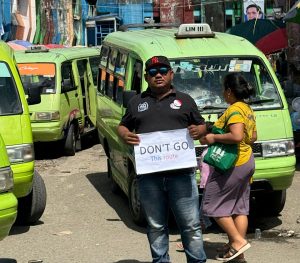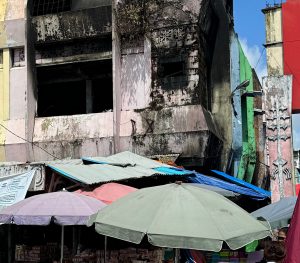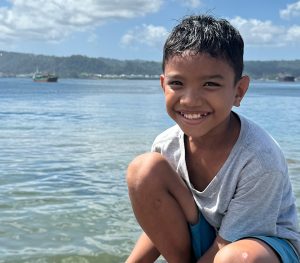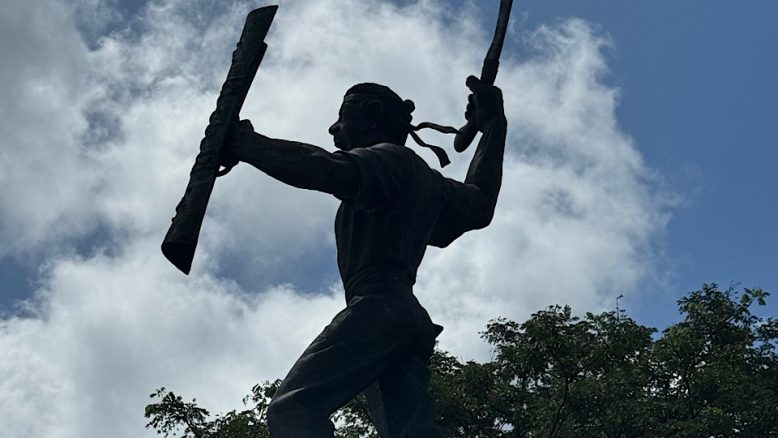There is a long and sometimes sordid history of the the Dutch seeking to establish a trade monopoly around Ambon, Indonesia, and aside from the seizure of agricultural products (fish, beef jerky coffee) the local people were also required to do forced labor. There were multiple social reasons that further contributed to the rebellion of the Maluku people. In May 1817 Pattimura led a rebellion that evicted the Dutch from the fortress and on May 29 he was declared the leader of the Moluccan people.
There is a latent reflected rebelliousness in most visitors to Ambon and the sign diverting us from the more challenging quarter of the city says it all. Beyond the barricade of immovable buses, stalled in a forever gridlock, there was the tender and suffering side of the street. The sign said it all. It was a posting of genuine concern.

Beyond the sign, burnt out buildings and umbrella based shelters. Green micro buses spewing diesel fumes into the humid midday. The charcoal etching around the windows hint at a burned out shelter, a burned out life, a burned out NGO program and below an emerging community ready to evict the interlopers. Ready for liberation.

On the concrete wall of the bridge the next generation smiles! Carefully scaling his fish and proudly preparing it for his mother. This is home to him. Fishing off the bridge at the edge of the public market while his mother sells the catch. This is a landmark that is a living statue. A Genesis of the breath of life. The smile punctuates another, “it was good.”

